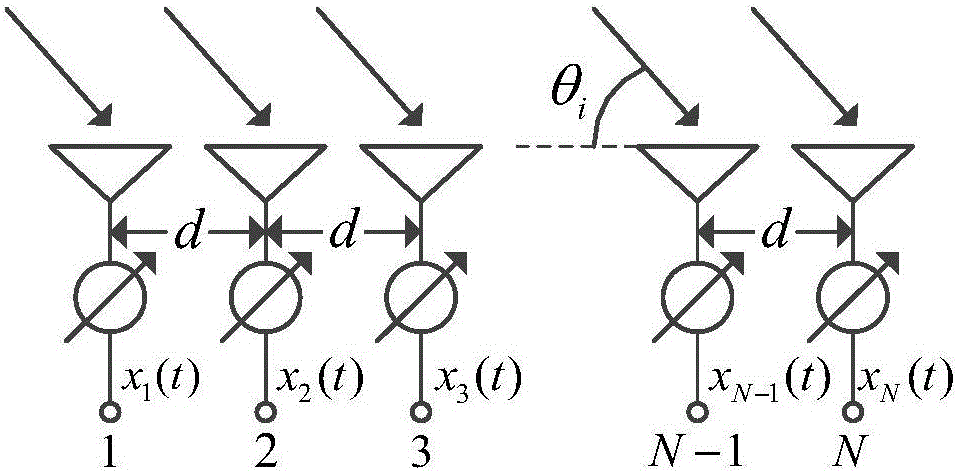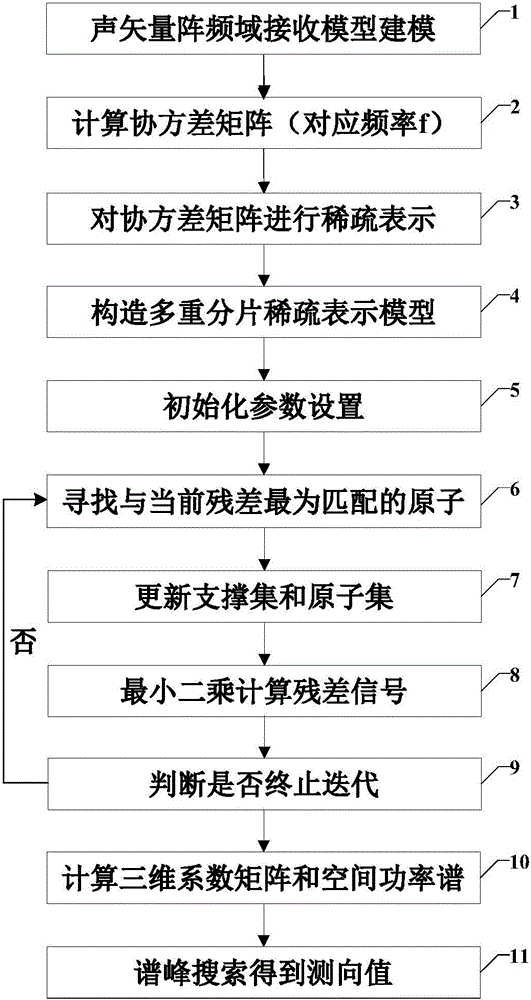Acoustic vector array wideband direction finding method based on sparse decomposition theory
A sparse decomposition, acoustic vector array technology, applied in radio wave measurement systems, instruments, etc., can solve the problems of fluctuations in the noise floor, inability to effectively distinguish, and large deviation of target azimuth estimation.
- Summary
- Abstract
- Description
- Claims
- Application Information
AI Technical Summary
Problems solved by technology
Method used
Image
Examples
Embodiment Construction
[0062] The technical solutions and effects of the present invention will be described in further detail below in conjunction with the accompanying drawings.
[0063] Due to the broadband characteristics of ship radiated noise, the sparse decomposition problem of broadband signals will inevitably arise when the sparse decomposition theory is applied to the vector hydrophone array direction finding. The inhomogeneity of the frequency energy distribution of the broadband signal will lead to different spatial sparse characteristics of each frequency point in the frequency band. If each frequency point is independently decomposed into narrow-band spatial domain sparseness, and then the decomposition results are simply added, it will not only lose the signal-to-noise However, it cannot handle coherent signals. In order to obtain a unified spatial sparse decomposition within the bandwidth, a way is needed to synthesize the sparse structure of each frequency point. Multi-shard proces...
PUM
 Login to View More
Login to View More Abstract
Description
Claims
Application Information
 Login to View More
Login to View More - R&D
- Intellectual Property
- Life Sciences
- Materials
- Tech Scout
- Unparalleled Data Quality
- Higher Quality Content
- 60% Fewer Hallucinations
Browse by: Latest US Patents, China's latest patents, Technical Efficacy Thesaurus, Application Domain, Technology Topic, Popular Technical Reports.
© 2025 PatSnap. All rights reserved.Legal|Privacy policy|Modern Slavery Act Transparency Statement|Sitemap|About US| Contact US: help@patsnap.com



